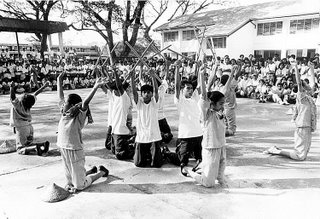 A common mistake by beginning photographers is always shooting pictures in the horizontal format (that is, the length being longer than the height). But that’s understandable since that’s the way our eyes are set, on a line, beside each other, and not one eye on top of the other. If I remember my Psychology 1 class correctly, the way our eyes are positioned allows us to be able to judge distances and depth correctly. (I think it’s called visual disparity.)
A common mistake by beginning photographers is always shooting pictures in the horizontal format (that is, the length being longer than the height). But that’s understandable since that’s the way our eyes are set, on a line, beside each other, and not one eye on top of the other. If I remember my Psychology 1 class correctly, the way our eyes are positioned allows us to be able to judge distances and depth correctly. (I think it’s called visual disparity.)
General rules in choosing what format to use
When do we use the horizontal format and when do we use the vertical format? As a general rule, landscapes and group pictures should be shot in the horizontal format. Portraits should generally be shot in the vertical format. If you shoot a group picture with the vertical format, for example, it would mean stepping a bit far back to include the whole group. This means that the persons in the group shot will look smaller in the resulting image.
Shape of the object determines what format to use
The shape of the subject usually determines what format we should use, for example, vertically shaped objects like trees, buildings, etc. should be shot in the vertical format, as in the example below of the building (and the two students in the bottom portion contemplating their life after high school. Kapag tumibok ang puso!.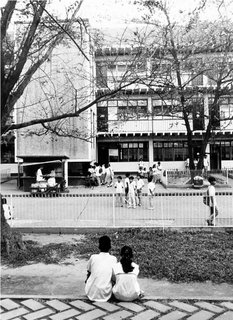 The vertical format however gives you a restricted view of things. If you want to show your subject’s surroundings therefore, you should use the horizontal format. (Later one, we will discuss what is known as “environmental portraits.” That’s a promise.)
The vertical format however gives you a restricted view of things. If you want to show your subject’s surroundings therefore, you should use the horizontal format. (Later one, we will discuss what is known as “environmental portraits.” That’s a promise.) Picture formats and emotions
Picture formats and emotions
Remember our lesson on lines and their psychological effects on viewers? The format you use will depend on what emotion or mood you want to convey to your viewers. The horizontal format emphasizes horizontal lines which suggest harmony, stability, serenity. On the other hand, the vertical format suggests movement, dynamism and activity. In the picture above, we have both horizontal and vertical lines present.
Shoot several frames of a subject using both formats
It is a good practice, however, to shoot your subject in both horizontal and vertical formats. (Remember that with a picture shot in the horizontal format, you can edit and crop it to produce a vertical format picture.)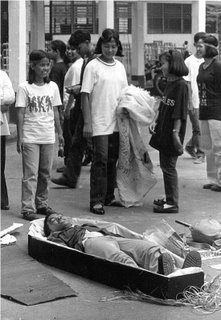 That’s not a real corpse in picture above, okay? The students were waiting for the start of the eliminations for the “Dekada 70” competition and we were having some fun with the coffin. The guy was trying to see if he could fit into the coffin. He did! I shot the picture vertically to concentrate attention on him and the other students watching him.
That’s not a real corpse in picture above, okay? The students were waiting for the start of the eliminations for the “Dekada 70” competition and we were having some fun with the coffin. The guy was trying to see if he could fit into the coffin. He did! I shot the picture vertically to concentrate attention on him and the other students watching him.
To familiarize you with the vertical format, here are several examples of pictures shot in that format.
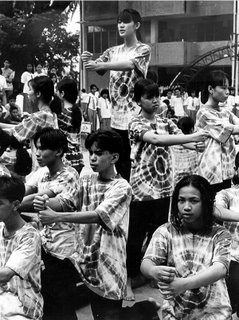
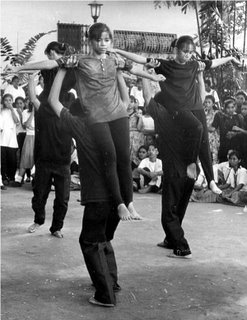
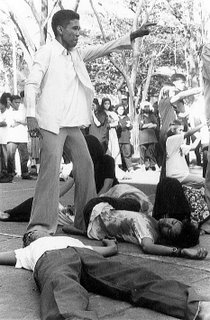
Tuesday, August 07, 2007
Photojournalism (17): Picture formats
Subscribe to:
Post Comments (Atom)






No comments:
Post a Comment